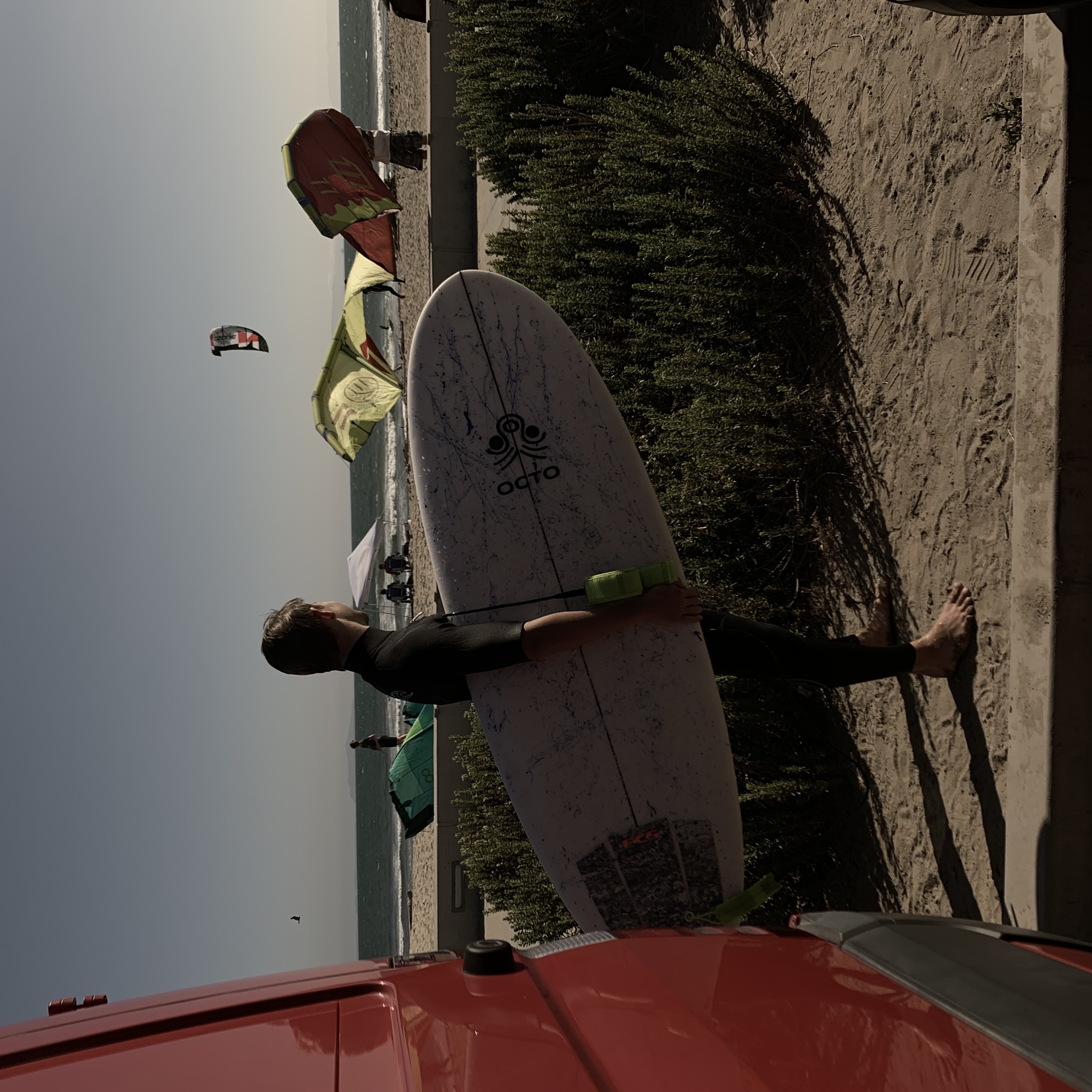Custon Surfboard Shaping
When I was 15 I decided I wanted to shape my own surfboard. I was very lucky to have a close friend, John Simon, who was a surfboard shaper. In the years since, John has become one of the best young shapers in the world, and I remain incredibly lucky to have had him help me build my first custom surfboard.

Background
Growing up in a southern California beach town meant growing up surfing. I progressed through a myriad of boards growing up, from soft-tops to hybrid boards, then eventually fiberglass and epoxy boards. I began doing surfboard ding repair at a young age, mostly for friends and family, but I made a bit of money and most importantly learned a lot about the materials of a surfboard and how to work with them. After I got a 7'0” Fletcher Chouinard custom board, I decided that my next step would be a shortboard and I wanted to make it myself. This is a common occurrence in my life; I don't enjoy buying things that I know I could make myself for cheaper while learning and having fun. I decided I would shape and glass my own board, so I reached out to my friend John Simon. John gave me some advice on what to do to get started, and graciously offered to let me use his shop and tools (and walk me through the process) once I was ready.
Design
My first step was designing the board on my computer. I used BoardCAD, a surfboard designing software like I had seen Fletcher use when making a board for me. With this software, I molded a board that I thought would be perfect for me to make the transition from mid-length to shortboard: a 5'8” tall, wide, thick, tank of a surfboard. Once I was satisfied with the dimensions and the rocker, I printed out the design onto a series of sheets of paper to get a life-sized outline of the board. This I taped down and traced onto a piece of masonite, the surfboard shaper's template of choice. I bought a surfboard blank, basically a big hunk of foam that roughly resembles a surfboard, and brought it and my template to John.
Construction
Over the course of multiple nights after school, John and I met in his shop, a little
warehouse in the industrial park with a shaping bay inside, and worked on uncovering
my board from its foam prison. After tracing the template onto the blank and cutting
it out, the work consisted mostly of planing down the foam to reach the correct
thickness. After that, I took down the rails to a rough shape. The majority of the work
came after this. With a series of meshes and sandpapers, the board had to be smoothed
out to reach the finely tuned shape that all surfboards need. I wasn't looking for
perfection, but if you know surfboards, you know when a rail or tail is not as it should
be. With John's watchful eye, I was able to bring the board together to a satisfying
final product.
This was only step one. I next had to mill our the fin boxes, a task that
was made easy on me by a friend whose father owned a surfboard glassing shop. After
a quick lesson on how fin boxes were to be angled and milled out, Larese Laminations
expertly completed the process for me in approximately 30 seconds.
My job with the fins came next. I had to insert the fin boxes, which I did
with a mixture of resin and Q-cel, a thickening agent, along with specialized
fin-box-setting fins, which have cutouts to help tape down the boxes in a flush position.
After letting them cure for a few days, I was on to glassing.
Glassing was one of the harder portions of this project. I had no mentor, only
YouTube videos, but I went into it with confidence. My first step was adding a design to
the board. I eventually decided to splatter it with blue resin, a messy but enjoyable task.
Next was the glassing. I first laid two layers of fiberglass on the bottom, along with my
custom logos, and saturated them with surfboard resin. After coating the rails and hull,
I waited for it to dry, sanded the edges, flipped the board, and completed the same process
on the deck. After the entire board had cured, I applied the gloss coat, sanded through
the fiberglass to access the fin boxes, and sanded away imperfections.
After about a month of work, I was finished. I surfed it for the first time and
while I might be biased as its creator, it was as good as any other board I've ever surfed.